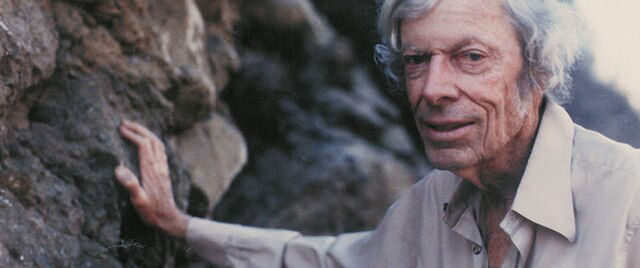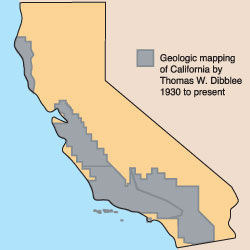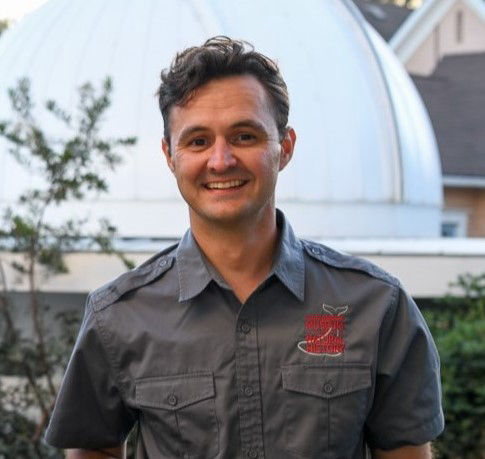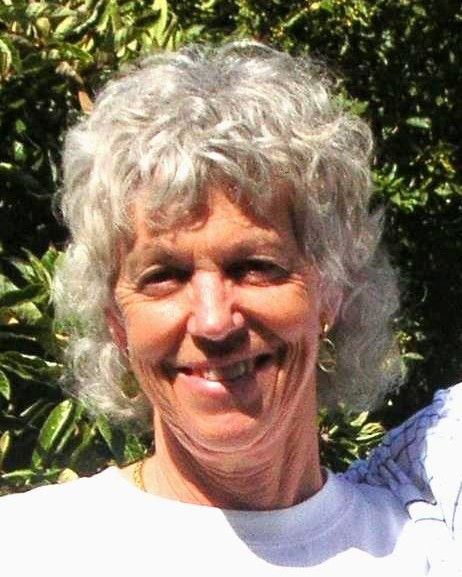Dr. Jonathan M. Hoffman, Ph.D. - Dibblee Curator of Earth Science



Thomas W. Dibblee, Jr. (1911-2004¬) was an incomparable field geologist with a mapping career that spanned 7 decades and covered over a quarter of California (>40,0000 square miles). A suite of innate skills aided Dibblee’s remarkable work, including an uncanny memory and recognition of visual patterns, an excellent eye for judging angles, and an inexhaustible ability to traverse harsh terrain. Tom mapped for oil companies and spent 25 years with the United States Geological Survey, making numerous notable contributions to geologic research, including the proposal of more than 350 miles of right-lateral displacement along the San Andreas Fault Zone.
Dibblee continued to map after his retirement in 1977, and in 1986 friends and colleagues formed the Dibblee Geological Foundation with the mission of preserving the scientific, technical, educational, and economic values of Tom’s life work. Maps were updated by Dibblee and colleagues and provided standardized colors and formats. In total, 419 updated “Dibblee Maps” were published and have informed and benefitted numerous California industries, including mining, energy development, engineering and land development, environmental consulting, and insurance. Today, the Dibblee Geology Center at the Santa Barbara Museum of Natural History is dedicated to Dibblee’s ideals of advancing knowledge of the Earth through research, providing expert geologic advice to both public and private interests, and advancing public education in geology.

Jonathan Hoffman came to the Santa Barbara Museum of Natural History (SBMNH) in 2017 after receiving his Ph.D. in Geology from the University of Wyoming. He earned his Master’s in Geology from the University of Florida and Bachelor of Arts in Geology from Occidental College. His research interests focus on the paleoecology and evolution of mammals through the Cenozoic.
As the Dibblee Curator of Earth Science, Dr. Hoffman is responsible for the Museum’s geology and paleontology collections. He has placed a strong emphasis on reanimating the fossil collecting program and growing the Earth Science Collection to fully represent the Central Coast’s paleontology and geology. In the spirit of Tom Dibblee, Dr. Hoffman conducts field work, collaborates with the United States Geological Survey, and supports natural resource management of public lands. Channel Islands National Park is a key component to these efforts, as SBMNH is the official repository for Channel Islands National Park and Jonathan has been working with the Park Service to protect, recover, and study fossils from the Channel Islands.

Susie grew up in rural Pennsylvania playing in the wooded hills and rocky creeks outside her house. After college and graduate school, she married and came in 1974 to Santa Barbara, where she later enrolled in Santa Barbara City College to study geology. As a student there, she met Tom Dibblee on numerous field trips where he shared his knowledge of the local geology.
As their friendship grew over the years, Susie often drove Tom to various meetings and field events, with occasional outings to field-check his maps before final publication. After he died, she worked as a technical review assistant for John Minch at the Santa Barbara Museum of Natural History, and together with Jason Minch, they completed the publication of some 500 Dibblee quadrangles, finishing in 2009.
Since then, Susie has worked with community organizations to bring an awareness of earth science to the general public in outdoor settings. She thanks Santa Barbara City College for the education that has so enriched her life, and she credits the Museum’s partnership with the Dibblee Geological Foundation for taking Tom’s legacy forward. She lives in Santa Barbara with her husband and assorted cats, has two daughters, and 5 terrific grandsons.
Drag & Drop Website Builder